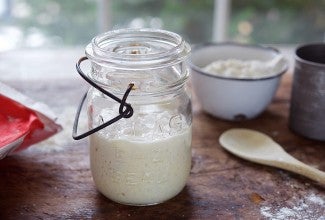Things bakers know: Black liquid on your sourdough starter is totally fine
Don’t throw your starter out! Here’s how to save it instead.
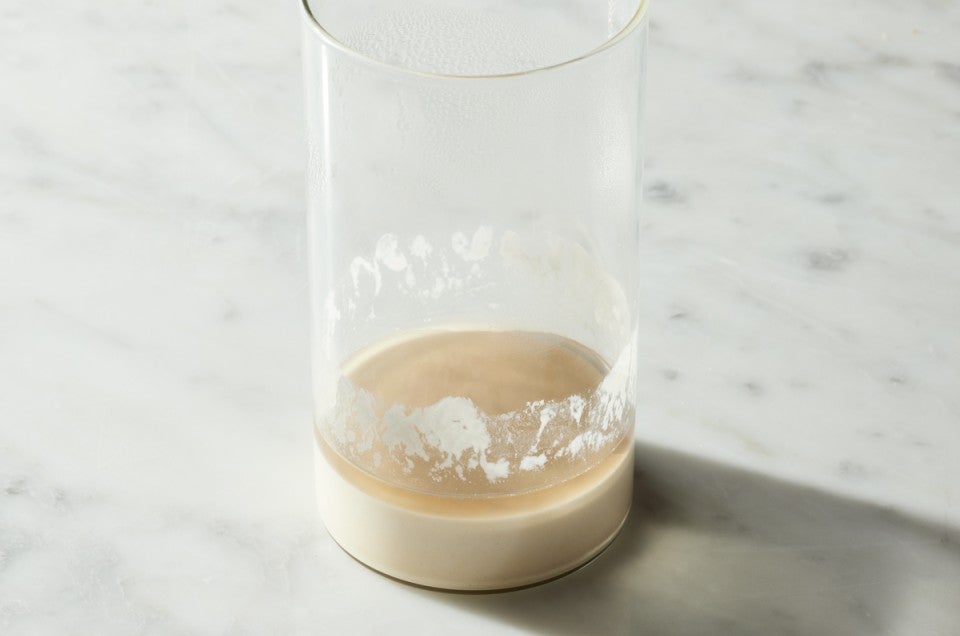

Many of us love baking with sourdough. But particularly for newcomers, maintaining your own starter can be a bit scary at times: like when you pull that forgotten jar from the back of the fridge and find a thick layer of inert sludge covered by an inch of black liquid.
“Is it dead?” Nope! It’s actually quite difficult to kill sourdough starter. And that black stuff isn’t harmful, either — it’s perfectly safe. The inky liquid is simply telling you the starter is hungry.
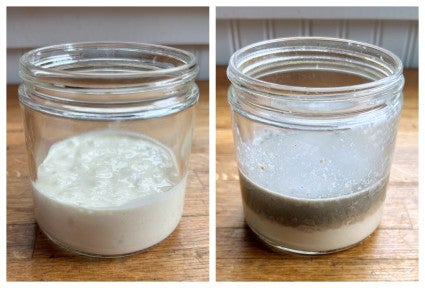
This thin liquid (called “hooch”) is merely alcohol and water generated by your starter’s wild yeast as it feeds. Hooch is a visible cry for help: Your starter is hungry. Once you get it back on a regular regimen of care, it should recover just fine.
Although it’s rare, your starter may at some point pick up some harmful bacteria or mold. Once you’ve drained off the hooch, if you see orange or pinkish streaks atop the remaining starter (or on any crusty dried starter on the container walls), it’s best to throw it all out and start again.
The more liquid on top of sourdough starter, the longer it may take to revive it. Just a thin sheen of liquid means your starter is only moderately underfed; one or two feedings should bring it up to snuff. But if the liquid is more copious, and especially if it’s dark in color, it will likely take two or more days of twice-a-day feedings before it’s ready for your bread recipe.
Speaking of color, what makes hooch dark? Hooch is mostly alcohol and water, but it’s not pure liquid: There’s starch, sugar, and even some undigested flour suspended in the mix as well. The longer the liquid sits, the more those particles oxidize, and the darker the liquid gets.
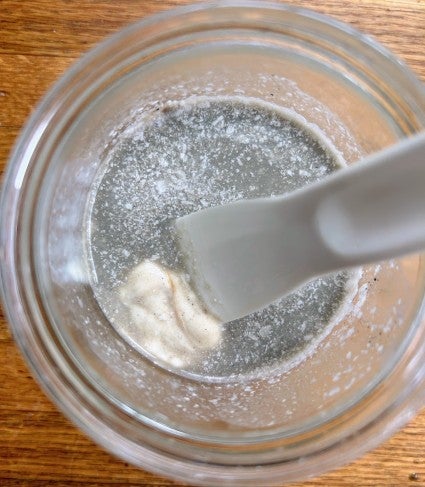
First, decide whether to drain off the hooch or stir it in. Most bakers choose to stir the liquid back in, as alcohol can enhance flavor. But if there’s a lot of liquid (say, more than half an inch or so), and especially if it’s very dark, feel free to pour it off: not because it’s “bad,” but because that amount of liquid may change your starter’s hydration enough to make a difference in your baking. (If you choose to keep it, don’t worry: The dark color won’t show up in your final loaf.)
Barb Alpern, one of the sourdough experts on our Baker’s Hotline, advises callers to discard the hooch if it’s darkened to black. “At this point, the liquid is all sourdough waste products and isn’t going to contribute anything very positive to the starter. While it probably won’t hurt to stir it in, I prefer to pour it off.”
Start by transferring a weighed amount of starter (I generally use 113 grams) to a clean bowl or wide-mouth container — something with easy accessibility and enough capacity to hold a starter that could double or triple in size after feeding. I particularly like King Arthur’s glass sourdough crock, which is not only wide-mouthed for super-easy access but includes marked measurements on its clear sides, so you can easily check your starter’s progress if you choose to feed it right in its storage container.
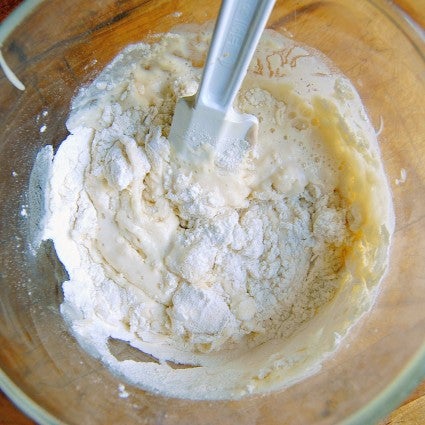
Add flour and lukewarm water in amounts equal to the starter weight: in my case, 113 grams unbleached all-purpose flour and 113 grams water. Tip: If your starter has been woefully neglected, substitute a whole grain flour — rye or whole wheat — for half the all-purpose flour. See both the benefits and details in our post on how to revive your sluggish starter.
Stir everything together, cover, and leave at room temperature to see what happens. If by some miracle your starter is very bubbly and has doubled in volume after 6 to 8 hours, it’s fully recovered and ready for baking (or to go back into the fridge for long-term storage). More likely, though, you’ll need to repeat the feeding process additional times.
Going forward, feeding your starter on a regular and fairly frequent schedule (once a week is ideal) will ensure it’s healthy and happy enough to wake up and be ready to go to work after just a single feeding.
The feeding process will generate a lot of extra starter: what’s left over once you’ve scooped out your chosen amount to feed. Rather than throw out this “discard” (as it’s commonly called), save it and bake with it! Discard starter can add flavor to everything from pizza crust to chocolate cake.

One exception: Any discard generated as a result of the very first feeding in the recovery process should actually be disposed of. Its flavor may be a bit strong or “off,” rather than fresh and nicely sour.
If you’re simply not confident that your neglected starter can be brought back to life — and you don’t want to spend many days and lots of flour trying — turn to our fresh sourdough starter. Once your package arrives, you’ll be ready to bake in as little as 24 hours!
Cover photo by Mark Weinberg; food styling by Liz Neily.
